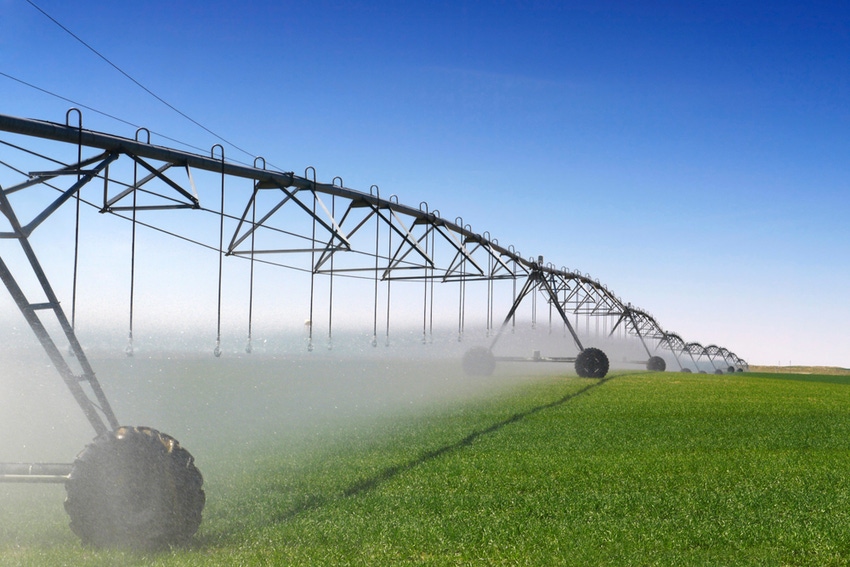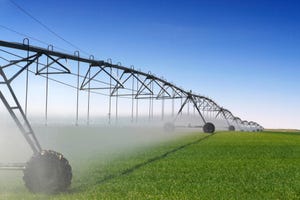The world has enough water. Does it have the ability to manage it correctly?
May 21, 2015

“The fact is, there is enough water to meet the world’s growing needs, but not without dramatically changing the way water is used, managed and shared,” according to “Water for a Sustainable World,” the 2015 United Nations (UN) World Water Development report. “The global water crisis is one of governance, much more than of resource availability.”
Without significant changes in management, the report says the planet faces a 40% shortfall in water supply by 2030.
“Groundwater provides drinking water to at least 50% of the global population and accounts for 43% of all of the water used for irrigation,” according to the UN report. “Worldwide, 2.5 billion people depend solely on groundwater resources to satisfy their basic daily water needs.”
The global population is growing by about 800 million per year and is expected to reach 9.1 billion in 2050, according to the UN report—2.4 billion in sub-Saharan Africa alone.
Closer to home, some of the nation’s most agriculturally-productive regions overlay and depend on the groundwater from the Ogallala Aquifer in the High Plains and the Central Valley Aquifer in California.
But those resources are being used heavily. Cumulative depletion of groundwater in the U.S. from 1900 to 2008 of 1,000 km3 is about twice the volume of Lake Erie, according to “Groundwater Depletion in the U.S. (1900-2008)” from the U.S. Geological Survey (USGS). The report evaluates long-term cumulative depletion volume in 40 separate aquifers or areas and one land use area.
“This large volume of depletion represents a serious problem in the U.S. because much of this storage loss cannot be easily or quickly recovered and affects sustainability of some critical water supplies and base flow to streams, among other effects,” according to the report. “The individual depletion assessments can be lumped into broader categories to help illustrate the magnitude of the problem. The three individual systems that represent the largest contributors to groundwater depletion in the U.S. from 1900-2008 are principal aquifers—the High Plains Aquifer (340.9 km3), the Mississippi embayment aquifer system (182.0 km3) and the Central Valley Aquifer system of California (144.8 km3).”
To put that in perspective, “The losses in Lake Powell and Lake Meade, as big as they are, the groundwater losses are six or seven times bigger, and that’s because there is no management and because no one is really paying attention,” says Jay Famiglietti, senior water scientist for NASA’s Jet Propulsion Laboratory at the California Institute of Technology. He was speaking at the recent annual meeting of the National Institute for Animal Agriculture.
Famiglietti works with NASA’s Gravity Recovery and Climate Experiment (GRACE), which he likens to a scale in the sky that tracks changes in water availability around the world. In simple terms, GRACE involves twin satellites that measure the earth’s gravitational field. The more ground mass, the greater the gravitational tug on the satellite. The difference in mass is water.
“We can see areas gaining or losing water—changes in all of the surface water, snow, soil moisture and ground water together,” Famiglietti explains. It doesn’t measure absolute amount but change.

Photo Credit: cenix / ThinkStock
Based on GRACE data, areas losing the most water are ice sheets in Greenland, Antarctica and glaciers in places like Alaska and Patagonia. There are a lot of other red spots—places losing groundwater over time—in areas with aquifers, such as those mentioned earlier in the U.S.
“Although groundwater depletion is rarely assessed and poorly documented, it is becoming recognized as an increasingly serious global problem that threatens sustainability of water supplies,” according to the USGS groundwater report. “Groundwater withdrawals in the United States increased dramatically during the 20th century—more than doubling from 1950 to 1975.”
Of course, all of this is before considering related issues that make the U.S. water wars a more populated battleground: everything from EPA’s would-be land grab under the guise of its Water of the United States proposal, to lawsuits over wastewater and water quality, to who owns what.
Beyond agriculture
Besides agricultural production specifically, a report from Ceres earlier this month describes the water threat that food companies face. “Feeding Ourselves Thirsty: How the Food Sector is Managing Global Water Risks,” ranks the nation’s 37 largest food companies on how effectively they manage freshwater supplies. The Ceres Company Network also includes the likes of Coca-Cola, Dell, Inc. and Nike, Inc.
The report examines how water risks are affecting the profitability and competitive positioning of food companies, such as by disrupting operations, limiting growth or increasing agricultural input costs, in four industries: packaged food, beverage, meat, and agricultural products.
“The twin challenges of global water scarcity and pollution are contributing to a water availability emergency that threatens the profitability of food companies and long-term food and water security,” says Brooke Barton, senior water program director at Ceres, who co-authored the report. “The good news is that more food companies are beginning to respond to these risks, but they must deepen and broaden their efforts, especially in regard to agricultural supply chains.”
The message is hitting home. “As a global food company, we recognize that conserving water resources is imperative to our business: our consumers, customers, farmers and operations,” says Ellen Silva, senior manager of applied sustainability at General Mills. “Water is a complex issue that spans communities, agriculture and industries, so in order to achieve progress, collaboration will be critical. We hope that this report can be a call to action for other companies to assess their water risk as well, and to join in that collaboration.”
Editor’s Note—Look for a three-part series on the water challenges facing cattle producers beginning in the June issue of BEEF magazine.
You might also like:
Don't bid away future profits by overpaying for cows
Pricklypear control helps replenish pastures
6 steps to low-input cow herd feeding
10 negative reviews of the Food Babe worth reading & sharing
Breed-back on first-calf heifers starts with nutrition
How to treat lump jaw disease in cattle
About the Author(s)
You May Also Like





